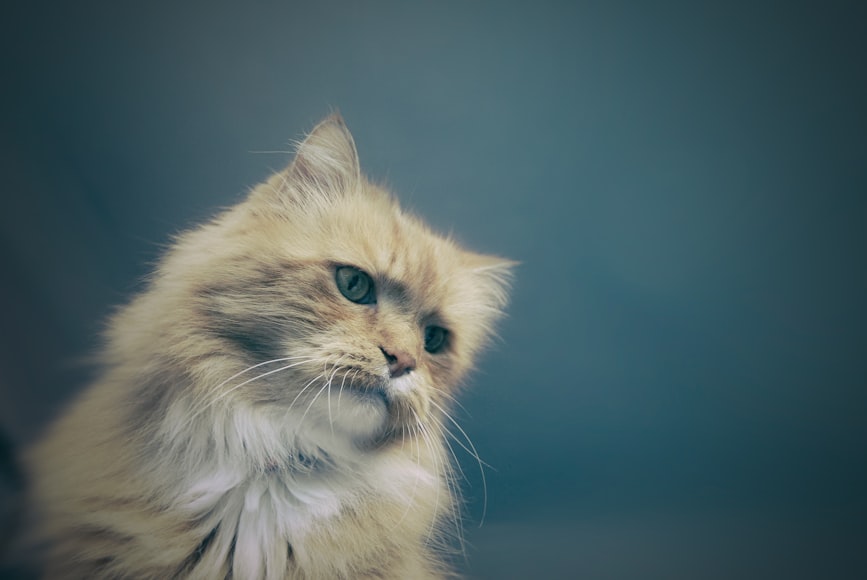How to Treat Feline Leptospirosis

Leptospirosis is a bacterial infection that can affect both cats and humans. It is caused by a type of bacteria called Leptospira, which is found in water, soil, and vegetation. Cats can become infected with Leptospira by drinking contaminated water or eating infected prey.
Leptospirosis can cause a wide range of symptoms in cats, including:
- Fever
- Lethargy
- Loss of appetite
- Vomiting
- Diarrhea
- Jaundice (yellowing of the skin and gums)
- Kidney failure
- Liver failure
- Death
If you think your cat may have leptospirosis, it is important to take them to the vet right away. The vet will perform a physical exam and ask you about your cat’s symptoms. They may also recommend running some tests, such as a blood test or urine test, to confirm the diagnosis.
The treatment for feline leptospirosis typically involves antibiotics and fluids. The antibiotics will help to kill the bacteria, and the fluids will help to flush the bacteria out of your cat’s system. In some cases, your cat may also need to be hospitalized for supportive care.
The prognosis for cats with leptospirosis depends on the severity of the infection. If the infection is caught early and treated promptly, most cats will make a full recovery. However, if the infection is severe, it can be fatal.
Here are some tips to help prevent your cat from getting leptospirosis:
- Vaccinate your cat against leptospirosis.
- Keep your cat indoors.
- Avoid letting your cat drink from contaminated water sources.
- Feed your cat only cooked meat.
- Wash your hands thoroughly after handling your cat.
If you have any questions about feline leptospirosis, please talk to your vet.
Recognition and Diagnosis

Leptospirosis is a bacterial infection that can affect cats and other animals. It is caused by the bacteria Leptospira, which can be transmitted through contact with contaminated water, soil, vegetation, or infected animals.
Symptoms of Feline Leptospirosis:
The clinical signs of feline leptospirosis can vary depending on the severity of the infection. Some common symptoms include:
- Fever
- Vomiting
- Diarrhea
- Jaundice (yellowing of the skin and gums)
- Abdominal pain
- Lethargy
- Muscle pain
- Difficulty breathing
Diagnosis of Feline Leptospirosis:
Diagnosing feline leptospirosis typically involves two steps:
-
Observing Symptoms: Veterinarians will observe the cat’s symptoms and take a history of the cat’s exposure to potential sources of infection.
-
Blood Tests and Urinalysis: Blood tests and urinalysis can help confirm the diagnosis of leptospirosis. These tests can detect antibodies against the Leptospira bacteria and other changes characteristic of the infection, such as increased liver enzymes and kidney damage.
Confirmation of Leptospirosis Diagnosis:
If blood tests or urinalysis indicate a potential leptospirosis infection, your veterinarian may recommend further testing to confirm the diagnosis, such as:
- Polymerase chain reaction (PCR) testing: This test can detect the DNA of the Leptospira bacteria in blood or urine samples.
- Microscopic examination: Veterinary pathologists can examine tissue samples from infected organs (such as the liver or kidneys) to identify the presence of Leptospira bacteria.
An accurate diagnosis is essential for providing appropriate treatment for feline leptospirosis. If you suspect your cat may have leptospirosis, consult with your veterinarian immediately for proper diagnosis and treatment.
Antibiotic Therapy

Leptospirosis is a bacterial infection that can affect cats, causing symptoms ranging from mild to life-threatening. Treatment involves administering antibiotics to kill the bacteria and support the cat’s recovery.
Antibiotic Therapy
The primary treatment for feline leptospirosis is antibiotic therapy. The recommended antibiotics include:
- Doxycycline: A tetracycline antibiotic that is effective against leptospira bacteria.
- Amoxicillin-clavulanate: A penicillin-based antibiotic that is also effective against leptospira.
Administration and Monitoring
Antibiotics should be administered according to the veterinarian’s instructions. The usual course of treatment is 10-14 days.
It is essential to monitor the cat’s response to treatment and adjust the dosage as needed. If the cat does not improve or worsens, the veterinarian may need to modify the treatment plan or consider alternative antibiotics.
Other Supportive Measures
In addition to antibiotic therapy, other supportive measures may be necessary to help the cat recover from leptospirosis, such as:
- Fluid therapy: To prevent dehydration and electrolyte imbalances.
- Nutritional support: To provide the cat with essential nutrients and energy.
- Pain management: To alleviate any discomfort or pain caused by the infection.
Follow-Up Care
After treatment, the cat should be monitored regularly by the veterinarian to ensure that the infection has resolved and that there are no long-term complications.
Prevention
Vaccination is the best way to prevent feline leptospirosis. There is a vaccine available that protects cats against multiple strains of the bacteria. Cats should be vaccinated according to the veterinarian’s recommendations.
By following these treatment steps and implementing preventive measures, pet owners can help their cats recover from feline leptospirosis and prevent future infections.
Fluid Therapy

Leptospirosis is a potentially fatal bacterial infection that can affect both humans and animals, including cats. One crucial aspect of treating feline leptospirosis is providing adequate fluid therapy.
Why Fluid Therapy is Essential
Leptospirosis can lead to severe dehydration due to:
- Vomiting and diarrhea
- Kidney failure
- Respiratory distress
Maintaining hydration is essential for:
- Restoring electrolyte balance
- Flushing out toxins
- Supporting organ function
Types of Fluid Therapy
Two primary methods of fluid therapy are employed in treating feline leptospirosis:
- Intravenous (IV) Fluids: Fluids are administered directly into a vein, allowing for rapid absorption.
- Subcutaneous (SQ) Fluids: Fluids are injected underneath the skin, gradually absorbed over time.
Determining Fluid Requirements
The amount of fluids required depends on the cat’s weight, hydration status, and severity of symptoms. A veterinarian will assess these factors and calculate the appropriate fluid volume and composition.
Composition of Fluids
Fluids used in leptospirosis treatment typically contain the following:
- Balanced electrolyte solutions: To correct electrolyte imbalances and support hydration.
- Glucose: To provide energy and support blood sugar levels.
Administration of Fluids
Intravenous fluids are typically preferred in cases of severe dehydration or when the cat is unable to swallow. Subcutaneous fluids may be used in cases where intravenous access is difficult or the cat’s condition is more stable.
Monitoring Fluid Response
Once fluid therapy is initiated, the veterinarian will closely monitor the cat’s response to assess its effectiveness:
- Clinical signs: Improvement in dehydration, vomiting, and diarrhea.
- Blood tests: Assessment of electrolyte balance and kidney function.
Conclusion
Fluid therapy plays a critical role in the treatment of feline leptospirosis by maintaining hydration, correcting electrolyte imbalances, and supporting organ function. By providing adequate fluids, veterinarians can increase the chances of a successful recovery for affected cats.
Supportive Care

Leptospirosis is a bacterial infection that can cause serious illness in cats. While there is no specific cure for leptospirosis, supportive care can help manage the symptoms and improve the cat’s chances of recovery.
Supportive Care
Supportive care is an important part of treating feline leptospirosis. It involves providing the cat with a supportive environment and managing the symptoms of the infection.
Provide a quiet and comfortable environment for rest.
Cats with leptospirosis need a quiet and comfortable place to rest. This will help them recover their strength and reduce stress.
Offer nutritious and easy-to-digest food.
Cats with leptospirosis may have trouble eating due to nausea and vomiting. Offer them small, frequent meals of nutritious and easy-to-digest food.
Monitor vital signs and adjust treatment accordingly.
The cat’s vital signs (temperature, heart rate, and respiratory rate) should be monitored closely. If the cat’s vital signs start to deteriorate, the treatment plan may need to be adjusted.
In addition to supportive care, antibiotics are also used to treat feline leptospirosis. Antibiotics help to control the infection and prevent it from spreading. The length of the antibiotic course will depend on the severity of the infection.
With early diagnosis and treatment, most cats with leptospirosis make a full recovery. However, some cats may experience long-term health problems, such as kidney or liver damage.
If you think your cat may have leptospirosis, it is important to seek veterinary care immediately. Early diagnosis and treatment can help improve the cat’s chances of a full recovery.
Pain Management
Leptospirosis is a bacterial infection that can cause severe illness in cats, including pain and discomfort. Pain management is an essential aspect of treating feline leptospirosis to improve the cat’s well-being and recovery.
To effectively manage pain in cats with leptospirosis, veterinarians may administer pain medication, such as meloxicam or tramadol. These medications work by reducing inflammation and pain signals in the body. The specific choice of medication and dosage will depend on the severity of the cat’s pain and its individual response to treatment.
Administering pain medication should be done as prescribed by the veterinarian. It is important to follow the instructions carefully, including the frequency and duration of administration. Cats should be monitored for any adverse reactions to the medication, such as drowsiness or gastrointestinal upset.
In addition to medication, other measures can help reduce pain in cats with leptospirosis. These include:
- Rest and quiet: Providing a quiet and comfortable place for the cat to rest can help reduce stress and discomfort.
- Warm compresses: Applying warm compresses to sore areas can help soothe pain and promote relaxation.
- Massage: Gentle massage can help improve circulation and reduce muscle tension, providing relief from pain.
- Acupuncture: Acupuncture is a traditional Chinese medicine technique that can be used to stimulate specific points on the body to alleviate pain and discomfort.
It is important to note that pain management in feline leptospirosis is a holistic approach that involves both medication and other supportive measures. By addressing pain and discomfort effectively, veterinarians can help improve the quality of life for cats with this condition and support their recovery.
Monitoring and Recovery
Once your feline companion has been diagnosed with leptospirosis, it’s essential to closely monitor their progress and recovery. Here are some key steps to take:
Monitoring:
- Keep a close eye on your cat’s overall well-being: Observe their activity levels, appetite, and demeanor.
- Monitor for any changes in behavior: Lethargy, vomiting, diarrhea, or seizures can indicate complications.
- Check for signs of dehydration: Dry gums, sunken eyes, or reduced skin elasticity may indicate a need for fluid therapy.
- Record your cat’s temperature: A fever can be a sign of infection or complications.
Recovery:
- Repeat blood tests at intervals: Your veterinarian will recommend regular blood tests to assess your cat’s response to treatment and monitor liver and kidney function.
- Administer medication as prescribed: Follow your veterinarian’s instructions for administering antibiotics and any supportive medications.
- Encourage gradual return to activity: As your cat recovers, gradually increase their activity levels as tolerated. Avoid strenuous exercise until they are fully healed.
- Provide a supportive environment: Ensure your cat has access to fresh food, water, and a comfortable resting area.
- Limit contact with other animals: Leptospirosis can be spread through contact with infected urine, so isolate your cat from other pets until they are fully recovered.
Additional Tips:
- Be patient: Recovery from leptospirosis can take several weeks or months, depending on the severity of the infection.
- Follow your veterinarian’s instructions carefully: Adhere to the prescribed treatment plan and attend all follow-up appointments.
- Seek emergency care if necessary: If your cat exhibits any signs of worsening symptoms or distress, seek veterinary attention immediately.
By closely monitoring your cat’s progress and following the recommended recovery guidelines, you can help ensure their successful treatment and recovery from feline leptospirosis.
Environmental Management
Leptospirosis, a bacterial infection spread through contaminated water or soil, can be a serious health concern for cats. While veterinary care is crucial for treating the infection, environmental management plays a vital role in preventing further spread and recurrence.
Disinfect Contaminated Areas
The environment where your cat resides should be thoroughly disinfected to eliminate potential sources of Leptospira bacteria. This includes:
- Cleaning and disinfecting all surfaces that your cat may have come into contact with, including bedding, toys, and food and water bowls.
- Disinfecting areas where your cat spends time outdoors, such as patios and decks.
- Using a bleach solution (1:10 dilution) or a commercial pet-safe disinfectant to kill bacteria.
Limit Contact with Potential Sources of Leptospira
To minimize the risk of reinfection, it’s essential to limit your cat’s exposure to potential sources of Leptospira bacteria.
- Prevent your cat from drinking from stagnant water sources, such as puddles or ponds.
- Avoid areas where wildlife, such as rodents or contaminated animals, may roam.
- Keep your cat away from livestock or farm animals that may harbor Leptospira bacteria.
- If your cat must come into contact with potential sources, such as during outdoor activities, use a leash or keep them close to prevent them from ingesting contaminated water or soil.
Other Environmental Management Measures
In addition to disinfection and limiting contact, the following measures can further reduce the risk of feline Leptospirosis:
- Keep your cat indoors as much as possible, especially in areas where the disease is known to be present.
- Vaccinate your cat against Leptospirosis. While not foolproof, the vaccine can provide protection and reduce the severity of symptoms if your cat becomes infected.
- Avoid introducing new animals to your household without having them tested for Leptospirosis.
- Report any cases of Leptospirosis to your veterinarian promptly to prevent its spread within the community.
By implementing proper environmental management practices, you can effectively reduce the risk of feline Leptospirosis and promote your cat’s well-being. Remember, early detection and treatment, combined with thorough environmental management, are crucial for managing this bacterial infection effectively.
Prevention
Leptospirosis is a bacterial infection that can be fatal to cats if left untreated. The bacteria that cause leptospirosis are found in water, soil, and the urine of infected animals. Cats can become infected by drinking contaminated water or coming into contact with the urine of an infected animal.
There is no cure for feline leptospirosis, but the infection can be treated with antibiotics. Early detection and treatment are essential for preventing serious complications or death.
Prevention
The best way to prevent feline leptospirosis is to vaccinate your cat against the bacteria. The vaccine is safe and effective, and it can provide your cat with long-term protection against the infection.
In addition to vaccination, there are a number of other things you can do to reduce your cat’s risk of exposure to the bacteria that cause leptospirosis:
- Avoid exposing your cat to infected animals or their urine.
- Make sure your cat’s water bowl is always filled with fresh, clean water.
- Clean up urine and other animal waste promptly.
- Disinfect areas where your cat may have come into contact with the bacteria.
Good Hygiene Practices
Ensuring good hygiene practices in all environments where cats may come into contact with the pathogen is crucial in preventing the spread of feline leptospirosis. This includes:
- Regularly cleaning and disinfecting cat litter boxes
- Keeping cats indoors or supervised when outdoors
- Avoid contact with standing water
- Wearing gloves when handling potentially contaminated materials
By following these simple steps, you can help protect your cat from feline leptospirosis and keep them healthy and happy.


















